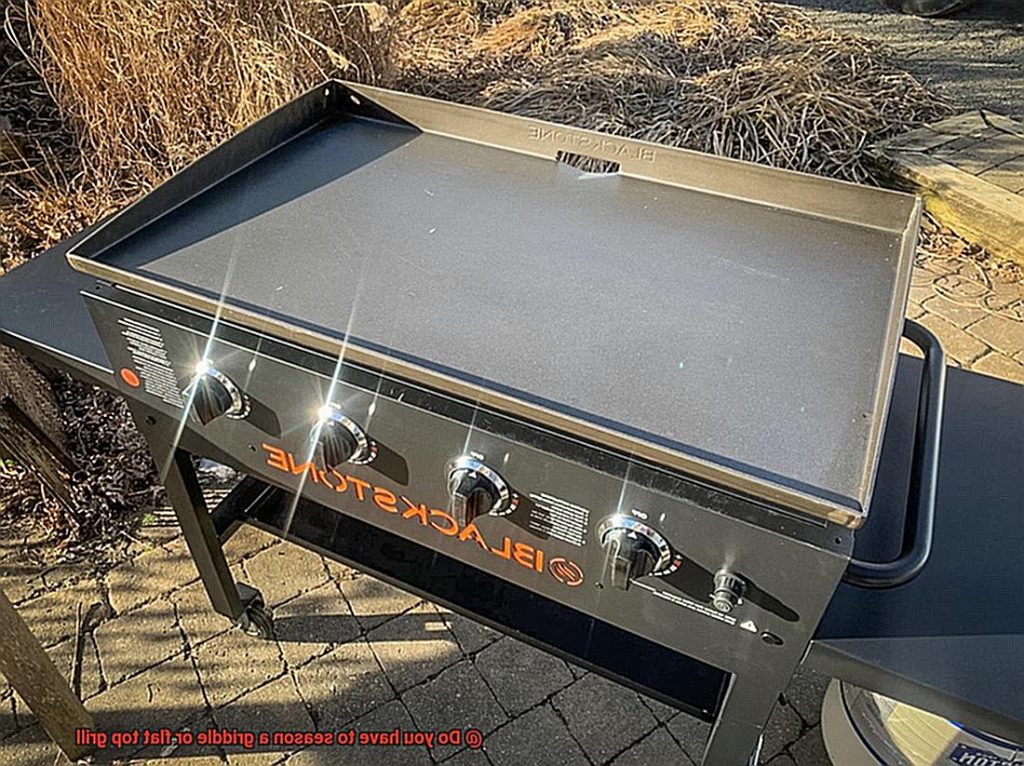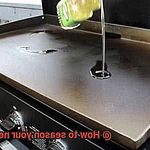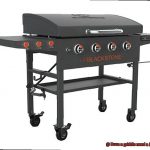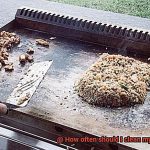Do you have to season a griddle or flat-top grill? Yes. Seasoning your cookware is essential for making delicious meals, as well as keeping it in good condition.
Cooking on an unseasoned griddle can lead to sticking, flaming and uneven heat distribution – not what you want when cooking. Plus, seasoning your cookware creates a non-stick coating and protects it from wear and tear.
Seasoning your griddle or flattop grill isn’t hard; just follow these steps: First, scrub away any rubble with a wire brush. Next, apply a thin layer of oil over the entire surface and heat it up until it starts smoking.
Finally, let the oil cool before wiping off any excess with a paper towel. It may sound like a lot of work but seasoning your griddle or flat top grill is worth it.
Plus, if you season regularly it won’t take more than a few minutes each time – so why not give it a try?
Contents
Why Should You Season a Griddle or Flat Top Grill?
Seasoning your griddle or flat top grill is an essential step in creating a delicious and hassle-free cooking experience.
Not only does it make cooking and cleaning easier, but it also helps to extend the life of your equipment and enhance the flavor of your food. When you season your griddle or flat top grill, you create a thin layer of polymerized oil that forms a non-stick surface.
This prevents delicate foods such as eggs, pancakes, and fish from sticking to the surface, making cleanup much simpler. But seasoning isn’t just about convenience; it also adds an extra touch of flavor to your dish.
As the oils are heated and mixed with food, they form a unique seasoning that imparts a savory taste to grilled meats and vegetables while also helping to prevent sticking. Moreover, seasoning helps protect the metal from rusting by forming a barrier between moisture and the metal surface.
Rust can cause the metal to degrade over time, so having a well-seasoned griddle or flat roof grill will extend its lifespan.
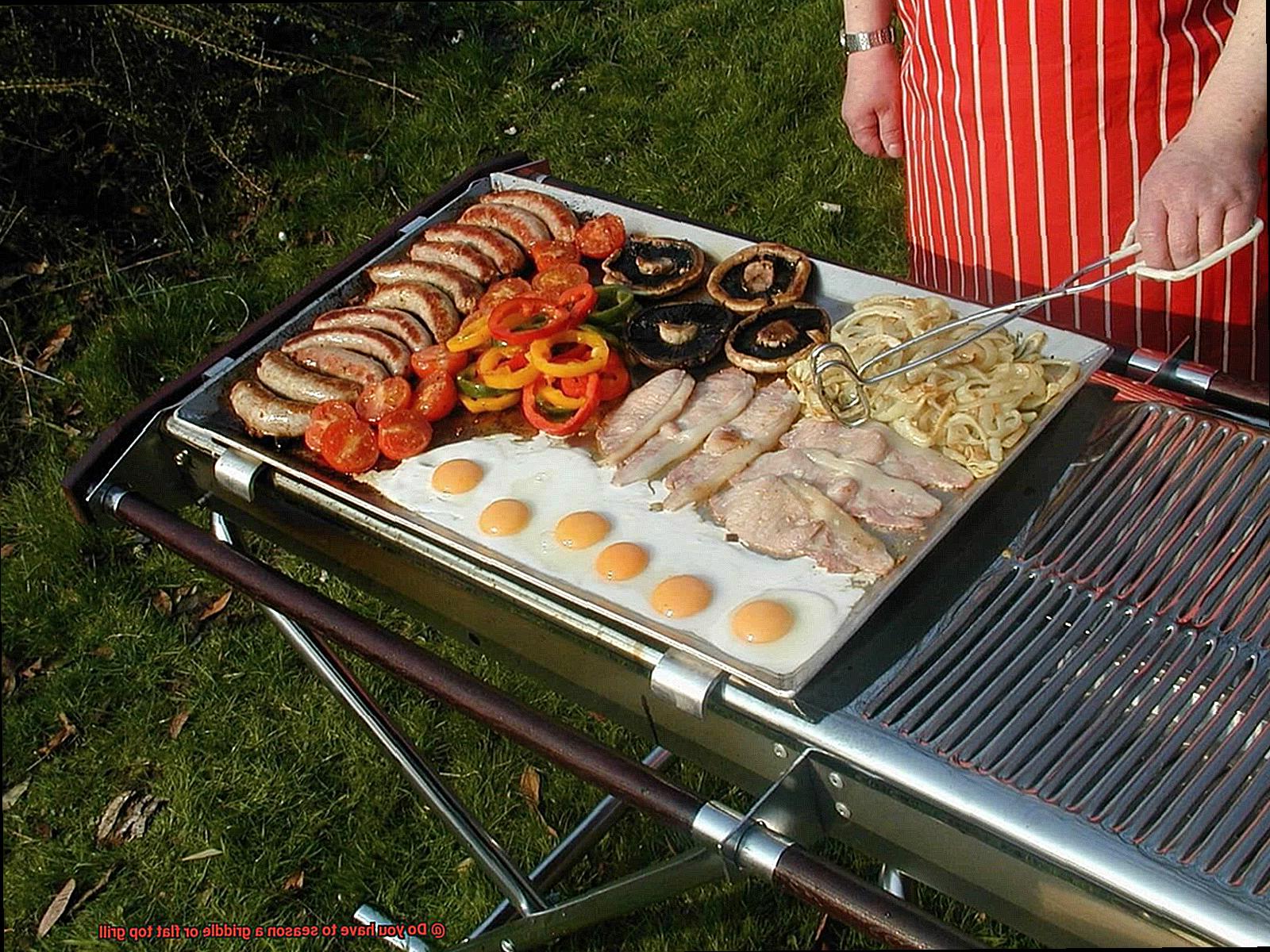
What Type of Oil Is Best for Seasoning?
For the best results, you should use an oil with a high smoke point such as flaxseed oil or vegetable oil. Flaxseed oil is the preferred option for seasoning.
It has a high smoke point, meaning it can withstand high temperatures without breaking down. Plus, it leaves behind a durable surface that resists sticking and rusting – perfect for griddles and flat tops that are exposed to heat and moisture on a regular basis.
Vegetable oil also has a high smoke point and is easily accessible. However, it’s not as strong as flaxseed oil so you may have to re-season more often.
These oils have low smoke points and will start to break down when heated, releasing harmful fumes in the process.
How to Clean and Prepare the Griddle Before Seasoning
When it comes to seasoning your griddle or flat top grill, proper preparation is key. Before you apply the oil or seasoning agent, you’ll want to make sure the surface is clean and free of any debris or buildup. Here are the steps you should take to make sure your griddle is properly cleaned and prepped before seasoning.
First, use a metal scraper or spatula to remove any food particles, grease, or other residue from the surface of the griddle. Then, wipe down the griddle with mild detergent and warm water using a paper towel or cloth. For particularly grimy griddles, try using a dedicated griddle cleaner to remove stubborn stains and buildup.
Once your griddle is clean and dry, it’s time to apply a thin layer of oil or seasoning agent. Vegetable oil, canola oil, and flaxseed oil are all suitable for this purpose.
Pour a small amount onto the griddle and use a heat-resistant brush or cloth to spread it evenly across the entire cooking surface.
Don’t forget about those corners and edges. Alternatively, you can use a paste or spray seasoning compound instead of oil.
Finally, turn on the heat and let your griddle heat up to its recommended temperature. This will allow the oil or seasoning agent to penetrate into the surface and create a non-stick coating that will last for years to come.
How to Season a Cast Iron Griddle
Cleaning Your Cast Iron Griddle
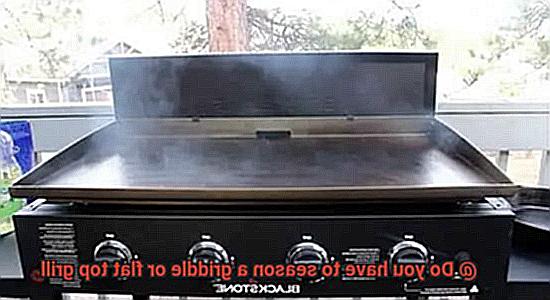
To begin the seasoning process, start by washing your cast iron griddle in hot soapy water to remove any residue left behind by the manufacturer. Then, dry it completely with a clean towel or paper towels. This will ensure that the griddle is ready for seasoning.
Applying the Oil
Once the griddle is dry, you’ll need to apply a layer of oil to create a non-stick coating on the surface. Choose an oil with a high smoke point, such as vegetable or canola oil, and spread it evenly over the entire griddle’s surface, as well as the edges and corners.
Preheating and Heating
To start the oil and produce a non-stick layer on the griddle, you’ll need to preheat it on medium-high heat for about 15 minutes before turning off the heat and allowing it to cool completely. To ensure that your griddle is properly prepared, repeat this process at least two times.
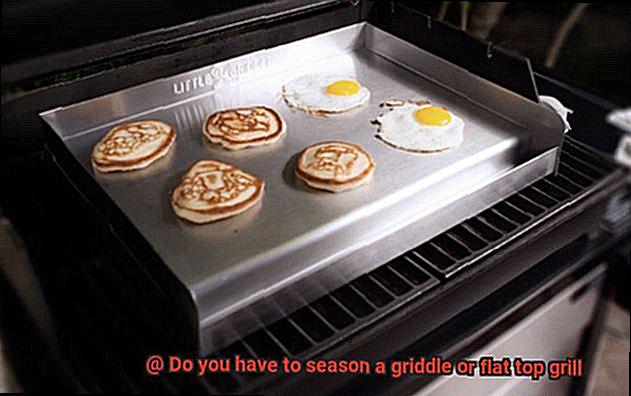
Maintaining Your Griddle
Properly maintaining your cast iron griddle will keep it fresh and ensure that it lasts for years to come. Be sure to clean it with a stiff brush or scraper, as well as hot water without using soap, then dry it completely before storing away.
Re-seasoning Your Griddle
If your cast iron griddle starts to look dull or lose its non-stick surface, don’t worry – just repeat the seasoning process again. Simply follow all of the steps above and you’ll be back to cooking delicious meals in no time.
How to Season a Stainless Steel or Aluminum Griddle
Griddle Surface: Before you can season your stainless steel or aluminum griddle, it’s essential to make sure that the surface is clean and free of any dirt or debris. To do this, use hot soapy water and give it a thorough scrub with a sponge.
Once you’re done, rinse it off with hot water and dry it completely using a paper towel or cloth.
Preheating the Griddle
Now that your griddle is clean, you’ll need to heat it up to 300-350°F for at least 15 minutes in order to open up its pores and make it more receptive to absorbing oil. This step is crucial for creating a non-stick coating on your griddle or flat top grill, so don’t skip it.
Applying Oil to the Surface
After preheating the griddle, you can begin spreading a thin layer of oil over its surface with a paper towel or cloth.
For this step, use high smoke point oils such as coconut oil, canola oil, or flaxseed oil; avoid using low smoke point oils such as olive oil or butter because they can smoke and burn easily.
Make sure you cover all areas of the surface including corners and sides before continuing on.
Maintaining the Seasoning
To maintain your non-stick layer after seasoning your griddle, be sure to sweep it after each use with a scraper, spatula, and soft-bristled brush. Avoid using any abrasive cleaners as they can strip away the seasoning that you worked so hard to create.
Years of Service From Your Griddle
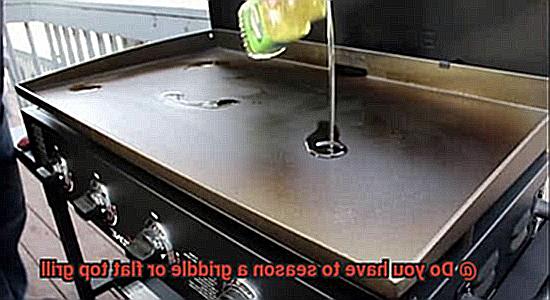
With patience and practice, you will be able to create perfectly cooked meals without any difficulties when you season your stainless steel or aluminum griddle correctly.
Tips for Maintaining Your Griddle After It’s Been Seasoned
Maintaining your griddle after it has been seasoned is essential for ensuring delicious, evenly cooked meals for years to come. To keep your griddle in top condition, follow these helpful tips.
– Clean Regularly
After each use, scrape off any food debris and wipe down the surface with a paper towel or grill brush. If necessary, use a mild detergent or degreaser to remove stubborn stains. Make sure to rinse the surface thoroughly and dry it completely before using it again.
– Utilize the Right Tools
Metal utensils and abrasive cleaners can damage the seasoning and scratch the surface of your griddle. Instead, opt for plastic or wooden utensils and a soft cloth or sponge to clean the surface.
– Store Properly
When not in use, make sure to remove any excess grease or oil from your griddle and store it in a dry, cool place. Covering it with a cloth or plastic wrap will help prevent dust and dirt from accumulating on its surface.
– Re-season Periodically
Over time, the seasoning on your griddle may wear off or become uneven due to frequent use. To restore it, repeat the seasoning process as described in the manufacturer’s instructions while making sure that you clean the surface thoroughly first.
– Check Burners and Fuel Supply
If your griddle has a gas-powered burner, inspect it periodically for any leaks, cracks, or other damages. Additionally, check that its fuel supply is adequate and safe before using it again.
Common Mistakes to Avoid When Seasoning a Griddle or Flat Top Grill
Seasoning your griddle or flat top grill is an essential part of ensuring it performs well and lasts for years to come.
However, there are a few common mistakes that can be made during this process, leading to uneven seasoning and food sticking. To help you avoid these pitfalls, here are the most important things to remember when seasoning your griddle or flat top grill.
First and foremost, make sure to clean off any debris or residue from the surface before beginning the seasoning process. This will ensure an even coating of oil is applied for a successful result.
Additionally, be mindful not to use too much oil; this can result in a build-up of carbon on your griddle or grill which can be difficult to clean and affect the taste of your food. It’s also important to use an oil with a high smoke point such as vegetable, canola, or flaxseed oil; oils with a lower smoke point like olive oil can produce too much smoke and a bitter flavor.
Finally, remember that regular seasoning is key; if done infrequently enough, food sticking will result in food sticking and altering the taste and texture of your food.
ZkXISfaUPko” >
Conclusion
Seasoning your griddle or flat top grill is essential for creating delicious meals and maintaining its longevity.
For best results, use an oil with a high smoke point such as vegetable or canola oil. Preheat the griddle to expand its pores before applying the oil and let it heat up until it starts smoking.
Wipe off any excess with a paper towel afterwards. To keep your griddle’s seasoning in check, use a soft cloth or brush after every use and store it in a cool dry place when not in use.
Re-season as needed and avoid common pitfalls such as using too much oil or low smoke point oils for optimal performance.

